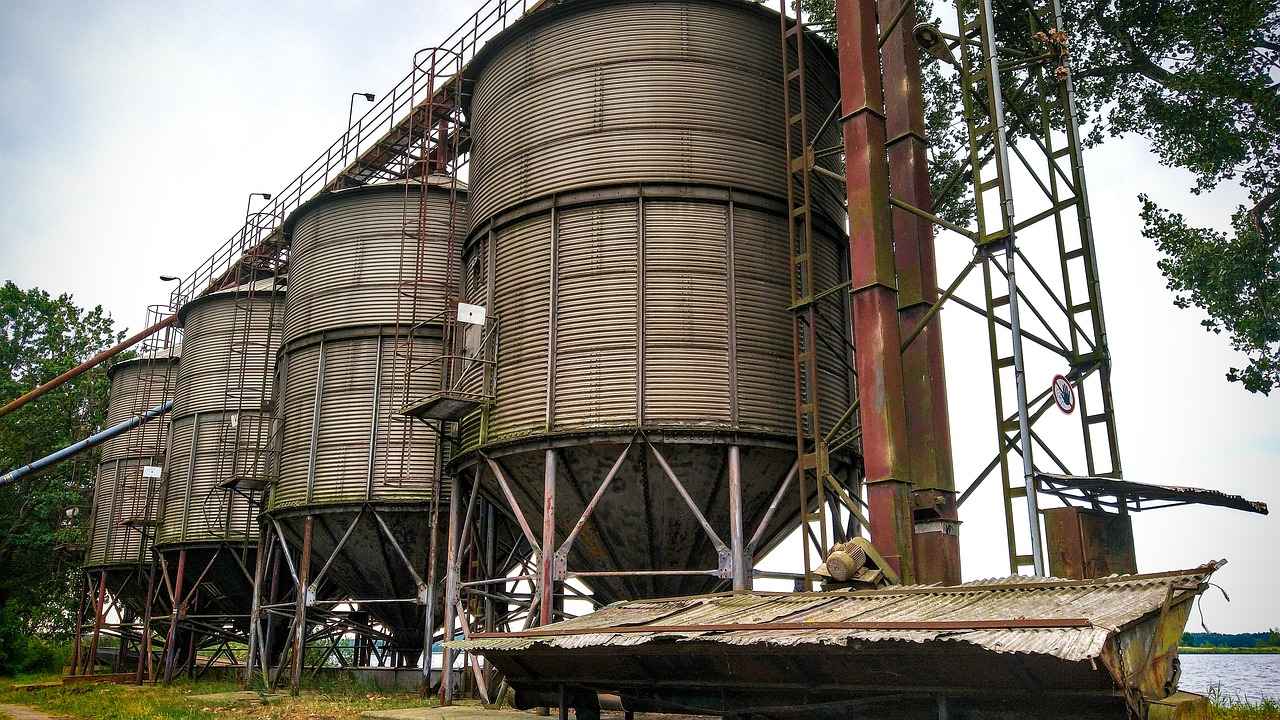This article delves into New Balance’s sustainability initiatives, examining their practices, goals, and the impact of their efforts on the environment and communities. As a leading footwear and apparel brand, New Balance recognizes its responsibility towards the planet and is committed to implementing sustainable practices across its operations.
Understanding New Balance’s Sustainability Goals
New Balance has set ambitious sustainability goals aimed at reducing their environmental footprint. Their long-term vision includes achieving a 50% reduction in greenhouse gas emissions by 2030. This section outlines their specific targets, which encompass not only carbon emissions but also waste reduction and resource conservation.
Eco-Friendly Materials Used by New Balance
The brand prioritizes the use of eco-friendly materials in its products. New Balance incorporates a variety of sustainable materials, including:
- Recycled Polyester
- Organic Cotton
- Natural Rubber
Recycled Polyester in Production
Recycled polyester is a key component in New Balance’s sustainable practices. By utilizing this material, the brand significantly reduces waste and energy consumption during production. This practice not only helps in conserving resources but also contributes to a circular economy.
Benefits of Using Recycled Materials
Using recycled materials conserves resources and minimizes environmental impact. The ecological advantages of incorporating recycled polyester into products include reduced energy usage and lower carbon emissions.
Challenges in Sourcing Recycled Materials
Sourcing recycled materials presents challenges, such as maintaining quality control and ensuring availability. New Balance faces these hurdles head-on by collaborating with suppliers to improve the recycling infrastructure.
Organic Cotton and Its Impact
Organic cotton is another staple in New Balance’s sustainable initiatives. This material benefits the environment by reducing pesticide use and promoting biodiversity. Additionally, it supports farmers by providing better working conditions and fair wages.
New Balance’s Manufacturing Practices
Sustainable manufacturing is critical for reducing environmental impact. New Balance employs practices aimed at minimizing waste and energy consumption during production. Their factories are increasingly adopting energy-efficient technologies and practices.
Energy Efficiency in Factories
Energy-efficient practices in factories play a significant role in sustainability. New Balance implements energy-saving technologies, such as LED lighting and advanced machinery, to lower energy consumption.
Water Conservation Efforts
Water usage in manufacturing can be substantial. New Balance’s strategies for reducing water consumption include recycling water in production processes and investing in water-efficient technologies.
Community Engagement and Social Responsibility
New Balance’s commitment to sustainability extends beyond environmental efforts. Their community engagement initiatives focus on supporting local communities and fostering social responsibility.
Supporting Local Communities
Supporting local communities is a vital aspect of New Balance’s corporate ethos. The brand invests in community development and empowerment initiatives, enhancing the quality of life for residents.
Employee Well-Being and Fair Labor Practices
Fair labor practices and employee well-being are crucial for sustainable business. New Balance ensures ethical treatment of workers throughout its supply chain, fostering a positive work environment and promoting employee rights.

Understanding New Balance’s Sustainability Goals
New Balance has made a significant commitment to sustainability, establishing a roadmap that outlines its vision for a more environmentally responsible future. The company recognizes the importance of reducing its environmental footprint and has set ambitious goals aimed at achieving significant progress by the year 2030.
At the heart of New Balance’s sustainability strategy is a dedication to minimizing waste and carbon emissions. By 2030, the company aims to achieve a 50% reduction in greenhouse gas emissions across its global operations. This target reflects a comprehensive approach that encompasses the entire supply chain, from raw material sourcing to manufacturing and distribution.
In addition to reducing emissions, New Balance is committed to increasing the use of sustainable materials in its products. By 2030, the brand plans to ensure that at least 50% of its materials are sourced from recycled, organic, or otherwise sustainable sources. This includes a focus on integrating recycled polyester and organic cotton into their footwear and apparel lines.
New Balance also places a strong emphasis on water conservation in its manufacturing processes. The company has set a goal to reduce water usage by 30% in its production facilities by 2030. This initiative not only conserves precious water resources but also enhances the overall efficiency of their operations.
Furthermore, New Balance is dedicated to fostering social responsibility within its business practices. The company aims to promote fair labor practices and ensure the well-being of workers throughout its supply chain. By 2030, New Balance seeks to implement comprehensive training programs that empower employees and support community development initiatives.
Through these ambitious goals, New Balance is paving the way for a more sustainable future. Their commitment to reducing environmental impact while enhancing social responsibility reflects a holistic approach to corporate sustainability that can inspire other brands to follow suit.

Eco-Friendly Materials Used by New Balance
New Balance has made significant strides in integrating eco-friendly materials into its product lines, reflecting a deep commitment to sustainability. This section explores the various sustainable materials that New Balance employs in both footwear and apparel, showcasing their dedication to reducing environmental impact.
- Recycled Polyester: A cornerstone of New Balance’s sustainable practices, recycled polyester is derived from post-consumer plastic bottles. By using this material, the brand not only diverts waste from landfills but also reduces the energy required for production. This innovative approach significantly lowers carbon emissions associated with manufacturing.
- Organic Cotton: New Balance prioritizes organic cotton, which is grown without harmful pesticides and fertilizers. This not only benefits the environment by promoting biodiversity but also supports farmers who practice sustainable agriculture. The use of organic cotton in apparel helps to create a healthier ecosystem.
- Eco-Friendly Leather Alternatives: In an effort to reduce reliance on traditional leather, New Balance has begun using alternative materials that offer similar durability and aesthetics while minimizing environmental harm. These alternatives are often made from recycled or plant-based sources, further enhancing the brand’s sustainability profile.
- Natural Rubber: The brand incorporates natural rubber in its footwear, which is sourced sustainably to ensure minimal impact on the environment. This material not only provides excellent traction and comfort but also supports sustainable forestry practices.
By prioritizing these sustainable materials, New Balance is not only enhancing the performance of its products but also making a positive impact on the planet. This commitment to eco-friendly practices reflects a growing trend in the industry, where consumers increasingly demand transparency and sustainability from brands.
As New Balance continues to innovate and refine its use of sustainable materials, the brand sets a benchmark for others in the industry, proving that eco-consciousness and high-quality performance can go hand in hand.
Recycled Polyester in Production
Recycled polyester plays a significant role in New Balance’s commitment to sustainability, serving as a vital material in their production processes. By utilizing recycled polyester, New Balance not only addresses the pressing issue of plastic waste but also contributes to a more sustainable future. This section delves into how the brand incorporates this material to minimize waste and energy consumption.
One of the primary advantages of using recycled polyester is its ability to reduce reliance on virgin materials. Traditional polyester is derived from petroleum, a non-renewable resource. In contrast, recycled polyester is produced from post-consumer plastic bottles and other discarded plastic products. By transforming waste into valuable resources, New Balance actively participates in the circular economy, which aims to keep materials in use for as long as possible.
In addition to reducing waste, the production of recycled polyester significantly lowers energy consumption. Studies have shown that producing recycled polyester can consume up to 50% less energy compared to creating virgin polyester. This reduction in energy use translates into decreased greenhouse gas emissions, further enhancing the environmental benefits of this sustainable material.
New Balance is committed to transparency in its supply chain, ensuring that the recycled polyester used in its products meets strict quality standards. The brand collaborates with trusted suppliers to source high-quality recycled materials, thereby maintaining the performance and durability that consumers expect from their products. This commitment to quality ensures that sustainability does not come at the expense of functionality.
Furthermore, New Balance’s investment in innovative technologies allows for the efficient processing of recycled materials. By embracing advancements in recycling technologies, the brand can enhance the quality of recycled polyester, making it a viable alternative to virgin materials.
In summary, the use of recycled polyester in New Balance’s production processes exemplifies the brand’s dedication to sustainability. By reducing waste, conserving energy, and maintaining high-quality standards, New Balance is paving the way for a more sustainable future in the athletic apparel industry.
Benefits of Using Recycled Materials
In today’s world, the push for sustainability has never been more crucial. Using recycled materials is a significant step towards achieving a greener future. By integrating recycled polyester into products, companies like New Balance not only contribute to resource conservation but also play a vital role in minimizing environmental impact.
One of the primary benefits of using recycled materials is the substantial reduction in waste. Traditional polyester production relies heavily on petroleum, which contributes to pollution and depletes natural resources. In contrast, recycled polyester is made from post-consumer plastic waste, such as bottles. This process effectively diverts waste from landfills and reduces the need for virgin materials, thus conserving precious resources.
Moreover, the manufacturing process of recycled polyester typically consumes less energy compared to producing new polyester. This reduction in energy consumption leads to lower carbon emissions, making it an eco-friendly alternative. By choosing recycled materials, brands can significantly reduce their carbon footprint, contributing to a healthier planet.
Another important aspect is the reduction of water usage. The production of virgin polyester requires vast amounts of water, whereas recycled polyester needs considerably less. This conservation of water is critical, especially in areas facing water scarcity.
Furthermore, the use of recycled materials encourages innovation and the development of new technologies. As demand for sustainable products grows, companies are motivated to invest in advanced recycling processes and materials, fostering a circular economy. This shift not only benefits the environment but also creates new job opportunities in the recycling and manufacturing sectors.
In summary, incorporating recycled polyester into products presents numerous ecological advantages. From conserving resources and reducing energy consumption to minimizing waste and fostering innovation, the benefits are clear. As consumers become more environmentally conscious, the demand for sustainable materials will continue to rise, paving the way for a more sustainable future.
Challenges in Sourcing Recycled Materials
Sourcing recycled materials is a crucial aspect of New Balance’s commitment to sustainability, yet it comes with its own set of challenges. The journey towards incorporating recycled materials into their products involves navigating a complex landscape of quality control, availability, and cost-effectiveness.
One of the primary hurdles is ensuring the quality of recycled materials. Unlike virgin materials, recycled options can vary significantly in quality, which can affect the performance and durability of the final products. New Balance must implement rigorous testing protocols to ensure that the recycled materials meet their high standards. This often requires collaboration with suppliers to develop consistent processes for material recovery and processing.
Another significant challenge is the availability of recycled materials. The supply chain for recycled materials can be inconsistent, as it heavily relies on the volume of materials collected and processed. Fluctuations in the recycling market can lead to shortages or surpluses, complicating production planning. New Balance is actively working to build relationships with reliable suppliers to mitigate these risks and ensure a steady supply of high-quality recycled materials.
Additionally, the cost of recycled materials can be a barrier. While the use of recycled materials is essential for sustainability, they can sometimes be more expensive than traditional materials. This cost discrepancy can impact pricing strategies and profit margins. New Balance is exploring innovative solutions, such as investing in recycling technologies and processes, to reduce costs and make recycled materials more accessible.
In summary, while sourcing recycled materials is a vital step for New Balance in their sustainability journey, it presents challenges that require strategic approaches. By focusing on quality control, securing reliable supply chains, and managing costs, New Balance aims to overcome these obstacles and enhance their commitment to sustainable practices.
Organic Cotton and Its Impact
Organic cotton plays a crucial role in New Balance’s sustainability initiatives, offering numerous benefits for both the environment and farmers. As a natural fiber, organic cotton is grown without the use of synthetic pesticides, fertilizers, or genetically modified organisms (GMOs). This approach not only protects the ecosystem but also promotes biodiversity and soil health.
The environmental advantages of organic cotton are significant. By avoiding harmful chemicals, organic farming reduces pollution in waterways and decreases the carbon footprint associated with conventional cotton farming. Furthermore, organic cotton farming practices, such as crop rotation and cover cropping, enhance soil fertility and reduce erosion, leading to a more sustainable agricultural system.
For farmers, organic cotton presents a pathway to improved livelihoods. By transitioning to organic practices, farmers can often command higher prices for their crops, as consumers increasingly seek out eco-friendly products. This shift not only supports their economic stability but also empowers them to adopt sustainable practices that benefit their communities and the planet.
Moreover, organic cotton farming encourages a healthier work environment for agricultural laborers. Without exposure to toxic chemicals, workers experience fewer health risks, leading to better overall well-being. This aspect aligns with New Balance’s commitment to social responsibility and ethical labor practices throughout its supply chain.
Incorporating organic cotton into their product lines, New Balance not only meets consumer demand for sustainable options but also contributes to a broader movement towards responsible fashion. By choosing organic cotton, consumers can play a part in promoting environmental stewardship and supporting farmers who prioritize sustainable practices.
In summary, organic cotton is a vital component of New Balance’s sustainability efforts, offering extensive benefits for the environment and agricultural communities. Through its commitment to using organic materials, New Balance is paving the way for a more sustainable future in the footwear and apparel industry.

New Balance’s Manufacturing Practices
Sustainable manufacturing is essential for minimizing the environmental impact of production processes. New Balance is committed to implementing practices that significantly reduce waste and energy consumption throughout its manufacturing operations. This commitment not only enhances the brand’s sustainability profile but also contributes to a healthier planet.
One of the core strategies employed by New Balance involves the integration of energy-efficient technologies within their factories. By utilizing advanced machinery and optimizing production workflows, the company has successfully reduced energy usage per unit produced. This not only lowers operational costs but also decreases greenhouse gas emissions, aligning with global sustainability goals.
In addition to energy efficiency, waste reduction is a critical focus area for New Balance. The brand has adopted a zero-waste philosophy, aiming to divert as much waste as possible from landfills. This is achieved through various initiatives, including recycling scraps from production and repurposing materials whenever feasible. For instance, excess rubber from footwear manufacturing is often recycled into new products, thereby extending the lifecycle of materials.
New Balance also prioritizes water conservation in its manufacturing processes. Recognizing that water usage can be substantial, the company has implemented systems to monitor and reduce water consumption. Techniques such as closed-loop water systems and water-efficient machinery have been introduced to minimize waste and ensure sustainable water use.
Furthermore, New Balance is actively engaging with its supply chain partners to promote similar sustainable practices. By collaborating with suppliers who share their commitment to sustainability, New Balance is fostering a broader culture of responsibility within the industry.
In summary, New Balance’s manufacturing practices reflect a deep commitment to sustainability. Through energy efficiency, waste reduction, and water conservation, the company is not only reducing its environmental footprint but also setting a standard for others in the industry to follow.
Energy Efficiency in Factories
is a vital component of sustainable manufacturing, significantly influencing a company’s overall environmental impact. New Balance, a leading athletic footwear and apparel brand, has made substantial strides in this area by integrating cutting-edge technologies and practices into its manufacturing processes.
One of the primary strategies employed by New Balance is the implementation of energy-efficient machinery. This includes state-of-the-art equipment designed to consume less energy while maintaining high productivity levels. By upgrading to these advanced systems, New Balance has significantly reduced its energy consumption per unit of production.
Moreover, New Balance actively engages in monitoring and optimizing energy usage across its factories. Through the use of smart sensors and data analytics, the company can identify areas where energy is being wasted and implement corrective measures promptly. This proactive approach not only conserves energy but also enhances operational efficiency.
In addition to machinery upgrades and energy monitoring, New Balance has invested in renewable energy sources. Many of their manufacturing facilities are now powered by solar energy, which further reduces their reliance on fossil fuels. This shift not only lowers greenhouse gas emissions but also contributes to the company’s long-term sustainability goals.
Another significant aspect of New Balance’s energy-saving initiatives is their commitment to employee training and engagement. Workers are educated on energy-efficient practices and encouraged to participate in sustainability initiatives. This cultural shift within the organization fosters a sense of responsibility among employees, leading to a more sustainable workplace.
Through these comprehensive energy-efficient practices, New Balance not only aims to minimize its environmental footprint but also sets a benchmark in the industry. By prioritizing sustainability in its manufacturing processes, New Balance is paving the way for a more responsible future in the apparel and footwear sectors.
Water Conservation Efforts
Water conservation in manufacturing is a critical aspect of sustainable practices, particularly for companies like New Balance. The footwear and apparel industry is known for its significant water usage, making it essential for brands to adopt effective strategies to minimize their consumption. New Balance has recognized this challenge and is actively implementing measures to reduce water usage across its production facilities.
Innovative Water Management Systems
To address water consumption, New Balance has invested in advanced water management systems that allow for better monitoring and control of water usage. These systems enable the company to identify areas where water can be saved, ensuring that every drop is utilized efficiently. By employing technologies that recycle and reuse water within their manufacturing processes, New Balance significantly reduces its overall water footprint.
Implementation of Closed-Loop Systems
One of the standout initiatives is the adoption of closed-loop water systems. These systems recirculate water used in various manufacturing processes, which minimizes waste and reduces the need for fresh water. This approach not only conserves water but also lowers the costs associated with water procurement and treatment.
Employee Training and Awareness Programs
New Balance understands that technology alone cannot achieve significant results. Therefore, they have launched employee training programs focused on water conservation practices. These programs educate staff on the importance of water efficiency and encourage them to adopt sustainable practices in their daily operations. By fostering a culture of sustainability, New Balance empowers its workforce to contribute to the company’s water conservation goals.
Collaboration with Water Stewardship Organizations
Additionally, New Balance collaborates with various water stewardship organizations to enhance its water conservation efforts. These partnerships provide valuable insights and resources that help the company implement best practices in water management. By working together with industry experts, New Balance is able to stay ahead of emerging challenges and continuously improve its water usage strategies.
In summary, New Balance’s commitment to reducing water consumption in its manufacturing processes reflects a broader dedication to sustainability. Through innovative technologies, employee engagement, and strategic partnerships, the company is making significant strides in conserving this vital resource.

Community Engagement and Social Responsibility
New Balance recognizes that true sustainability encompasses not only environmental stewardship but also a deep commitment to social responsibility. This section highlights the brand’s initiatives aimed at fostering community engagement and promoting ethical practices.
Investing in Local Communities
New Balance actively invests in the communities where it operates. The brand supports various community development programs designed to empower individuals and enhance local economies. These initiatives include funding for educational programs, sports activities, and health awareness campaigns. By partnering with local organizations, New Balance aims to create a positive impact that resonates with the community’s needs.
Promoting Health and Wellness
- Running and Fitness Initiatives: New Balance sponsors local running clubs and fitness events to promote an active lifestyle.
- Health Education: The brand supports workshops and resources that educate communities about health, nutrition, and physical fitness.
Employee Well-Being and Fair Labor Practices
New Balance places a strong emphasis on ethical labor practices across its supply chain. The company is committed to ensuring that all workers are treated fairly and work in safe conditions. This commitment is reflected in their adherence to strict labor standards and regular audits of their manufacturing partners.
Diversity and Inclusion Initiatives
Recognizing the importance of diversity and inclusion, New Balance fosters an inclusive workplace culture. The brand actively recruits from diverse talent pools and implements training programs aimed at promoting equity within the organization. This not only enhances employee morale but also drives innovation and creativity.
Environmental Education and Advocacy
New Balance believes in the power of education to drive change. The brand engages in advocacy efforts aimed at raising awareness about environmental issues. Through partnerships with environmental organizations, New Balance participates in campaigns that inspire communities to adopt sustainable practices.
By intertwining community engagement with social responsibility, New Balance exemplifies a holistic approach to sustainability that benefits both the environment and society.
Supporting Local Communities
is a fundamental aspect of New Balance’s corporate ethos. The brand recognizes that thriving communities are essential for sustainable growth and development. By investing in community development and empowerment initiatives, New Balance not only enhances its brand reputation but also contributes positively to the social fabric of the areas it operates in.
New Balance’s commitment to community support manifests in various forms, including financial contributions, volunteer programs, and partnerships with local organizations. These initiatives are designed to address critical social issues, such as education, health, and economic development. For example, the company often collaborates with local schools and non-profits to promote physical fitness and healthy lifestyles among youth.
One of the notable programs is the New Balance Foundation, which focuses on promoting youth fitness and wellness. Through grants and sponsorships, the foundation supports community-based organizations that encourage physical activity and provide resources for children and families. This initiative not only helps improve the health of local youth but also fosters a sense of community and belonging.
In addition to financial support, New Balance encourages its employees to engage in volunteerism. The company offers paid time off for employees to volunteer in their communities, fostering a culture of giving back. This initiative not only empowers employees to make a difference but also strengthens community ties.
Moreover, New Balance actively seeks to source materials and labor locally whenever possible. By doing so, the brand not only reduces its environmental impact but also supports local economies. This commitment to local sourcing helps create jobs and stimulates economic growth in the communities where New Balance operates.
In summary, New Balance’s dedication to is evident through its various initiatives aimed at empowerment and development. By investing in community well-being, the brand not only enhances its corporate responsibility but also contributes to a healthier and more sustainable future for all.
Employee Well-Being and Fair Labor Practices
Employee well-being and fair labor practices are essential components of a sustainable business model. New Balance recognizes this and has made significant strides in ensuring that its workforce is treated ethically and with respect throughout its supply chain. By prioritizing the welfare of employees, New Balance not only enhances its brand reputation but also contributes to the overall sustainability of the industry.
New Balance’s commitment to fair labor practices is evident in its rigorous supplier code of conduct, which mandates compliance with international labor standards. This code ensures that workers are provided with safe working conditions, fair wages, and reasonable working hours. The company conducts regular audits of its suppliers to monitor compliance and address any violations promptly.
Moreover, New Balance places a strong emphasis on employee well-being by implementing various programs aimed at enhancing the quality of life for its workers. This includes health and wellness initiatives, access to mental health resources, and opportunities for professional development. By investing in its workforce, New Balance fosters a positive workplace culture that encourages productivity and loyalty.
In addition to direct employment practices, New Balance actively supports initiatives that promote workers’ rights globally. The company collaborates with non-governmental organizations (NGOs) and labor unions to advocate for fair labor standards in countries where it sources materials and manufactures products. This collaborative approach ensures that the voices of workers are heard and that their rights are protected.
New Balance’s dedication to fair labor practices and employee well-being is not just a moral obligation; it is a strategic advantage. By ensuring ethical treatment of workers, the company strengthens its supply chain resilience and enhances its brand loyalty among consumers who increasingly value sustainability and social responsibility.
As New Balance continues to evolve its practices, it remains committed to transparency and accountability in its labor practices, setting a benchmark for others in the industry to follow.
Frequently Asked Questions
- What sustainability goals has New Balance set for 2030?
New Balance aims to significantly reduce its environmental footprint by 2030. Their goals include increasing the use of recycled materials and achieving carbon neutrality in their operations.
- How does New Balance use recycled polyester in its products?
New Balance incorporates recycled polyester into its footwear and apparel to minimize waste and energy consumption, helping to create a more sustainable product line.
- What are the benefits of using organic cotton?
Organic cotton is not only better for the environment due to its sustainable farming practices, but it also supports farmers by providing them with fair wages and healthier working conditions.
- How does New Balance ensure energy efficiency in its manufacturing?
New Balance implements energy-saving technologies and practices in its factories, which significantly reduce energy consumption during the manufacturing process.
- What initiatives does New Balance have for community engagement?
New Balance actively supports local communities through various development and empowerment initiatives, aiming to foster growth and well-being in the areas they operate.
- How does New Balance promote fair labor practices?
New Balance is committed to ensuring ethical treatment of workers throughout its supply chain, focusing on fair labor practices and employee well-being as part of their corporate responsibility.











































